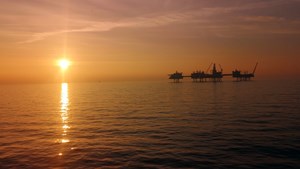Equinor taps new seismic data to bolster exploration and production efforts offshore Norway
(Bloomberg) – Equinor ASA said new seismic data is allowing for the reassessment of offshore oil and gas resources on Norway’s continental shelf, underpinning exploration and production efforts as the company targets as many as 30 wildcat wells a year through 2035.
“We are basically remapping the whole Norwegian Continental Shelf with new seismic technology, and we see quite a lot of interesting things left,” Kjetil Hove, Equinor’s head of Norwegian exploration and production, said Monday at the ONS conference in Stavanger.
Norway today supplies about a quarter of Europe’s natural gas, having replaced Russian flows cut in the aftermath of the invasion of Ukraine.
Existing infrastructure will produce most of the oil and gas that remains on the country’s continental shelf, with Equinor planning to spend between 60 billion kroner ($5.7 billion) and 70 billion kroner annually through the middle of the decade to maintain volumes, Hove said.
Production from the shelf in 2035 will be around 1.2 MMboed, on par with volumes pumped at the start of the decade, the executive said.
Equinor’s portfolio offshore Norway includes 21 projects that are in the execution phase, with three fields due to come on stream this year, including Johan Castberg in the Barents Sea. More than 30 fields are being assessed to make final investment decisions “within the next years,” Hove said.
The company continues to target exploration near existing infrastructure, with about 80% of wells in familiar locations.
Reducing carbon emissions from platforms and facilities remains a focus for Equinor, with energy efficiency measures, consolidation and drawing power from shore all helping to reduce greenhouse gases, the executive said.
“There is no doubt that the price of our products is the most important — fundamental for having value creation,” Hove said. “That doesn’t mean that the CO2 price isn’t important, because we see that the robustness of the industry gets worse and worse if you don’t do anything with emissions.”



